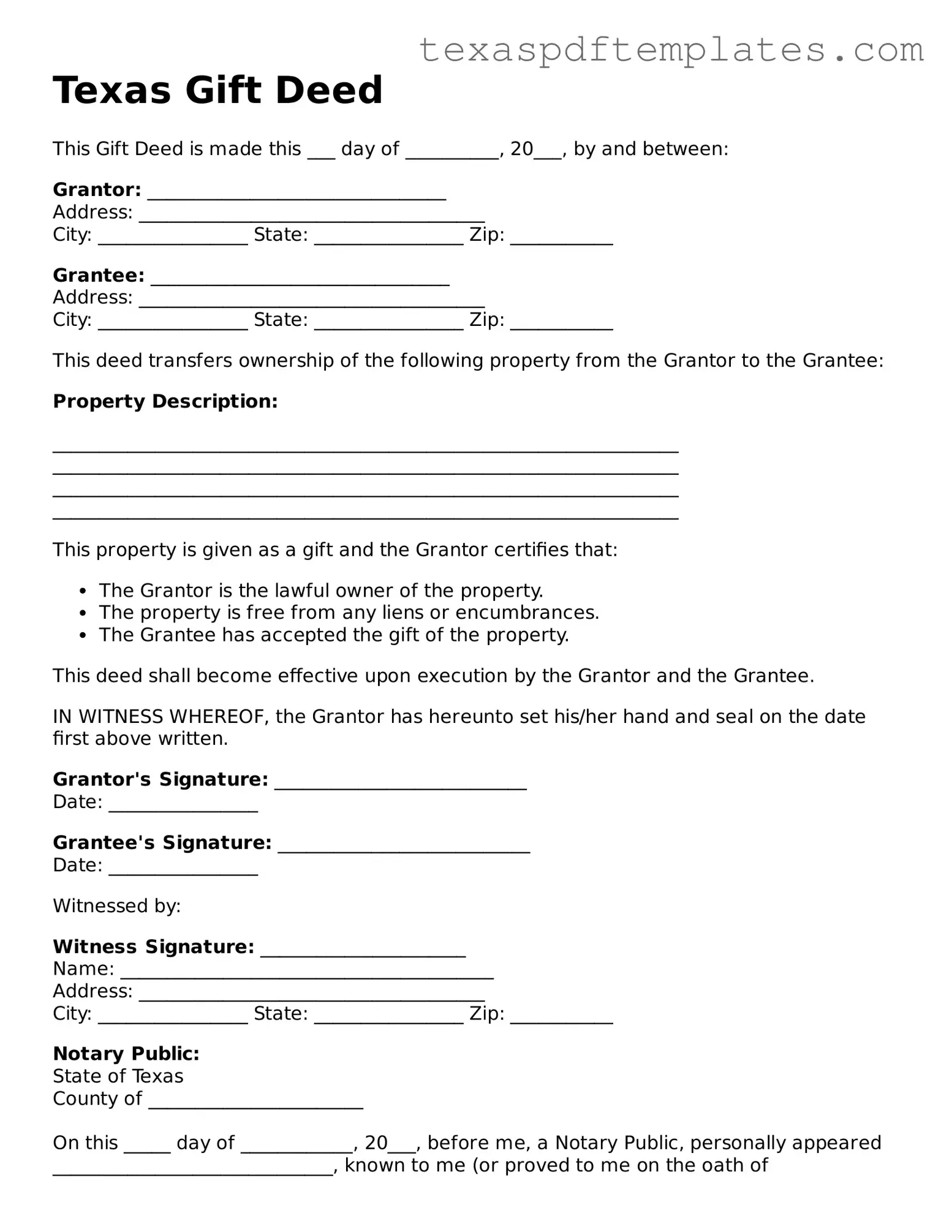Texas Gift Deed
This Gift Deed is made this ___ day of __________, 20___, by and between:
Grantor: ________________________________
Address: _____________________________________
City: ________________ State: ________________ Zip: ___________
Grantee: ________________________________
Address: _____________________________________
City: ________________ State: ________________ Zip: ___________
This deed transfers ownership of the following property from the Grantor to the Grantee:
Property Description:
___________________________________________________________________
___________________________________________________________________
___________________________________________________________________
___________________________________________________________________
This property is given as a gift and the Grantor certifies that:
- The Grantor is the lawful owner of the property.
- The property is free from any liens or encumbrances.
- The Grantee has accepted the gift of the property.
This deed shall become effective upon execution by the Grantor and the Grantee.
IN WITNESS WHEREOF, the Grantor has hereunto set his/her hand and seal on the date first above written.
Grantor's Signature: ___________________________
Date: ________________
Grantee's Signature: ___________________________
Date: ________________
Witnessed by:
Witness Signature: ______________________
Name: ________________________________________
Address: _____________________________________
City: ________________ State: ________________ Zip: ___________
Notary Public:
State of Texas
County of _______________________
On this _____ day of ____________, 20___, before me, a Notary Public, personally appeared ______________________________, known to me (or proved to me on the oath of ____________________________) to be the person whose name is subscribed to this instrument, and acknowledged to me that he/she executed the same for the purposes herein stated.
Given under my hand and seal this ______ day of ____________, 20___.
Notary Public Signature: _______________________________
My Commission Expires: _______________________________
